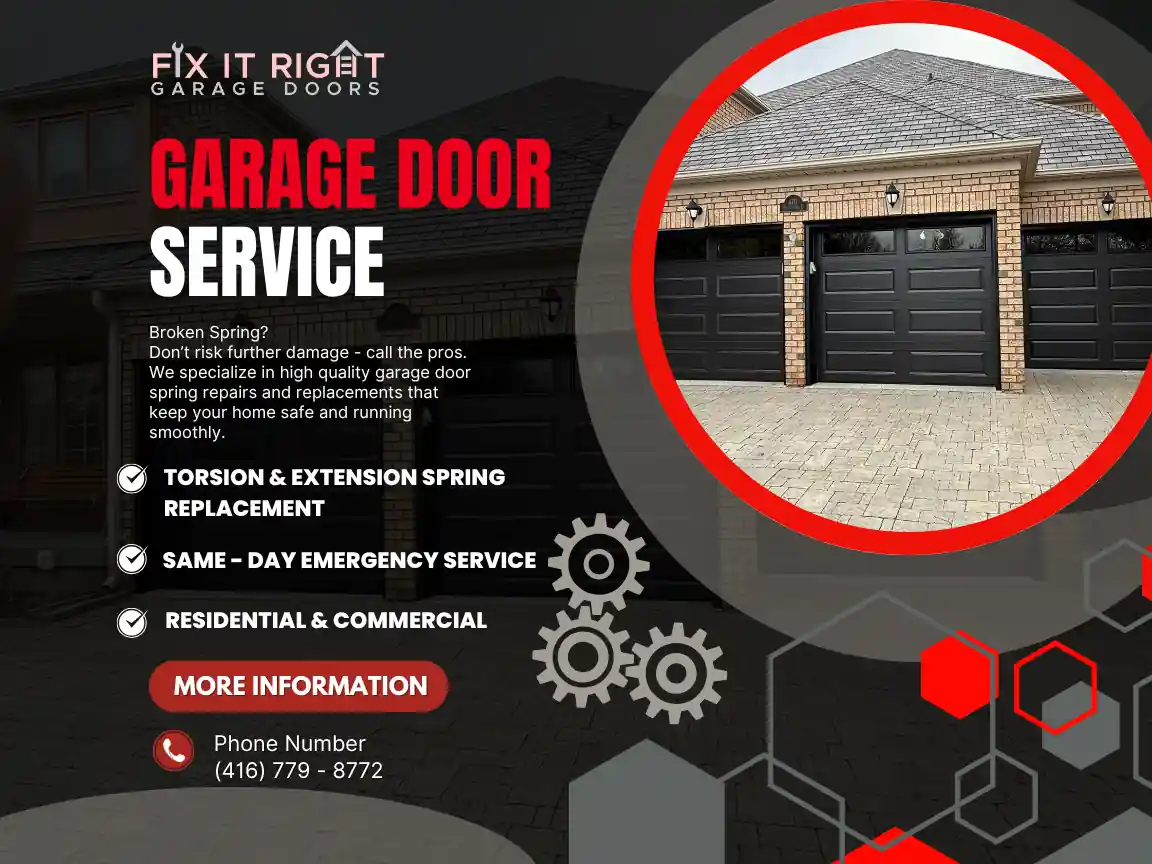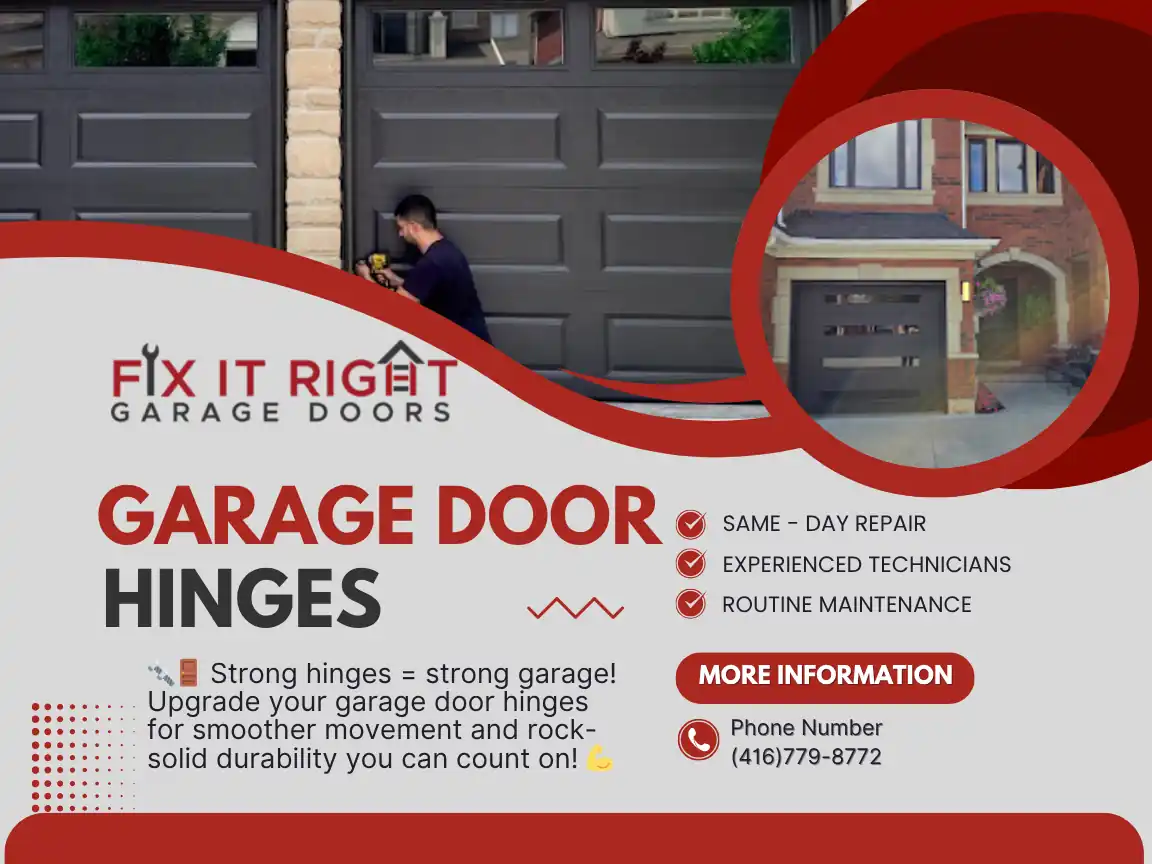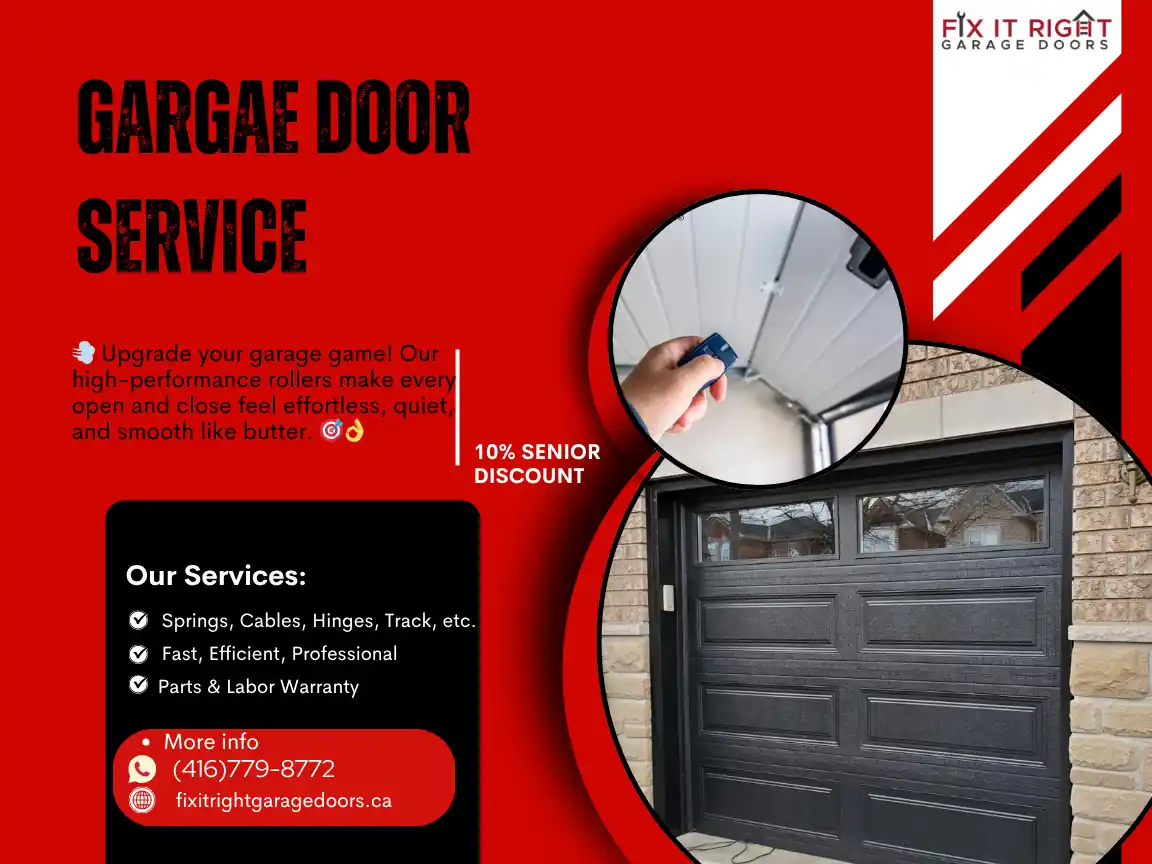If you’ve been hearing strange noises, experiencing slow door movement, or noticing that your trusty overhead unit just isn’t what it used to be, then it may be time for replacing garage door opener hardware. Swapping out an older model with a new, more efficient device can save you money on repairs, enhance security, and even reduce noise levels. It’s a project that can be done by a determined DIYer, though it often pays to hire professionals for a seamless result. ⚙️
Before we dive in, check out the quick reference table below. It’ll help you spot those common “red flags” that suggest replacing garage door opener might be your next necessary home improvement:
| Sign | What It Means |
|---|---|
| Door moves sluggishly or stalls frequently | A failing or underpowered motor |
| Loud grinding or rattling sounds | Worn gears or chain, possibly near end-of-life |
| Inconsistent remote response | Outdated electronics or faulty wiring |
| Lacks safety features (no auto-reverse) | An older model that doesn’t meet modern standards |
| Keypad malfunctions or no keypad at all | Upgrade needed for better convenience and security |
Over the next sections, we’ll explore the essentials: from understanding the different opener types and tools needed to real-life stories, checklists, and insider tips. Let’s get started!
Why Replacing Garage Door Opener Matters
Many homeowners delay replacing garage door opener components because the door still “kind of works.” But waiting until it outright fails can leave you stuck outside late at night or risk your family’s safety. Upgrading also adds modern features, like battery backups and smartphone connectivity, which can make daily life a whole lot easier. ⚡
Real-Life Example
Imagine you’re rushing to work, but your garage door simply refuses to open. You press the remote, and nothing happens. You swap batteries, wiggle the wiring—still no luck. This unfortunate morning scenario highlights why an outdated unit can throw a serious wrench into your schedule.
Practical Tip
Don’t wait until the last minute. Perform monthly checks and note the door’s response time, noise level, and reliability. A garage door opener tends to show small signs of declining health before it finally gives out.


Signs You’re Due for a New Garage Door Opener
When to replace a garage door opener is a common question. Some clear indicators include:
- Unreliable Opening/Closing
- If your door hesitates or reverses mid-close without reason.
- Increased Noise
- A sudden spike in grinding or squealing often indicates worn gears.
- Outdated Safety Features
- Modern systems have sensors, rolling codes, and auto-reverse.
- Frequent Breakdowns
- Repair costs can quickly add up, making replacement cheaper long-term.
Real-Life Example
A friend of mine kept tinkering with her ancient chain-drive opener. After multiple service calls, the cost of repairs nearly equaled the price of a brand-new belt-drive unit. By the time she realized this, she’d already spent more than she needed to.
Practical Tip
Create a small budget “piggy bank” for home improvements. That way, you’re financially ready to tackle replacing garage door opener the moment you see persistent issues.
Different Types of Garage Door Openers
Choosing the best garage door opener for your home hinges on personal preference, budget, and the specific needs of your garage. Here are the four main types:
- Chain-Drive
- Uses a metal chain to move the door.
- Often louder, but typically the most budget-friendly.
- Belt-Drive
- Utilizes a rubber belt for smoother, quieter operation.
- Great for attached garages where noise is an issue.
- Screw-Drive
- Employs a threaded steel rod; minimal components, moderate noise.
- Good for climates without extreme temperature swings.
- Direct-Drive
- The motor itself moves along the track.
- Very quiet but usually at a higher price point.
Real-Life Example
A homeowner with a baby’s room adjacent to the garage might value a belt-drive opener for its nearly whisper-quiet operation. Another homeowner with a detached garage could choose a chain-drive to save money without bothering neighbors.
Practical Tip
Climate matters. Extremely cold or hot environments can stress certain opener types. Consider your local weather when deciding on the best garage door opener for your home.
Essential Tools & Safety Gear
Before you roll up your sleeves for any DIY tips for garage door opener replacement, gather the following:
- Wrench & Socket Set: For loosening/tightening mounting bolts.
- Drill & Assorted Bits: Makes removing old brackets and installing new hardware faster.
- Step Ladder: A sturdy, non-slip model for reaching overhead components.
- C-Clamps or Locking Pliers: Secure the door on the track so it doesn’t suddenly drop.
- Safety Glasses & Work Gloves: Protect against flying debris or pinched fingers.
- Flashlight or Headlamp: Handy in the darker corners of the garage ceiling.
Real-Life Example
Picture this: You’re in the middle of removing the old opener, but your ladder wobbles on the uneven garage floor. Secure the area and use a ladder stabilizer if needed. Safety first!
Practical Tip
Always cut power at the circuit breaker, not just the opener’s power switch, to avoid accidental electrical mishaps. ⚠️
Step-by-Step: Replacing Garage Door Opener
Ready to roll up your sleeves? Here’s a broad overview of how replacing garage door opener mechanics works:
- Turn Off Power
- Locate the correct circuit breaker and switch it off.
- Remove the Old System
- Disconnect the opener from the door and the ceiling brackets.
- Prepare the New Opener
- Assemble the rail, attach the belt/chain, and secure any tensioners.
- Mount the Motor Unit
- Fasten brackets to the ceiling joists; follow manufacturer’s instructions for spacing.
- Attach Door Bracket
- Securely connect the opener’s arm to the door.
- Install Safety Sensors
- Position them near the base of the tracks. Align them exactly to avoid false triggers.
- Connect Wiring & Power
- Double-check the opener’s wiring diagram for correct terminals.
- Test & Adjust
- Open and close the door multiple times, making sure limits and force settings are correct.
Real-Life Example
A neighbor tried installing her new belt-drive opener without carefully reading the instructions. She forgot to calibrate the travel limits. The door slammed into the floor on its first test run, bending the top panel. Carefully follow each step to avoid damage!
Practical Tip
Snap photos of your old opener’s wiring before you disconnect anything. Visual references can be a lifesaver during reinstallation. 📸
DIY Tips for Garage Door Opener Replacement
Many homeowners ask about DIY tips for garage door opener replacement to save on labor costs. If you’re handy with tools, it’s quite doable, but always prioritize safety:
- Follow Instructions: Each brand has unique assembly steps.
- Use C-Clamps: Keep the garage door from moving unexpectedly.
- Enlist a Helper: Mounting the motor unit overhead can be tricky alone.
- Consult the Manual: Pay attention to torque settings and height adjustments.
Real-Life Example
I once assisted a friend who attempted a solo install. Midway, he realized balancing the motor on the ladder while screwing in the mounting bracket was beyond his comfort level. Having a second pair of hands made it a breeze.
Practical Tip
Even the most thorough DIY can miss some finer details. If anything feels off—strange vibrations, inconsistent stopping points—consider calling a professional.
Professional Garage Door Opener Installation vs. DIY
It’s tempting to tackle professional garage door opener installation tasks on your own. However, there are distinct benefits to hiring experts:
- Warranty Preservation: Some brands require professional installation to maintain coverage.
- Accurate Alignment: Technicians have specialized tools for sensor calibration.
- Time Savings: Avoid spending your entire weekend on tricky adjustments.
- Safety Assurance: Pros are trained to handle heavy parts and electrical wiring.
Real-Life Example
A colleague opted for professional garage door opener installation. Despite the cost, the technicians had everything done in under two hours, including testing and removing the old unit. No fuss, no stress.
Practical Tip
Ask about service guarantees. Many professional companies offer a satisfaction warranty, ensuring free adjustments if something isn’t perfect the first time.
When to Replace a Garage Door Opener (Detailed Insights)
We touched on signs to watch for earlier, but let’s get more specific about when to replace a garage door opener:
- 10-15 Year Mark
- Technology evolves quickly; older models may lack critical safety features.
- Multiple Service Calls
- If you’re calling for repairs more than once a year, start budgeting for a replacement.
- Security Concerns
- Modern openers use rolling codes that are tougher to hack.
- Visible Rust or Wear
- Rust on the rail or chain can point to deeper mechanical issues.
Real-Life Example
A family friend kept their opener for nearly 18 years. After hearing about break-ins in the neighborhood, they opted for a new system with rolling code technology. This decision gave them peace of mind and a quieter opener to boot.
Practical Tip
Look for UL-compliant labels on new openers. These indicate adherence to industry-recognized safety standards. ✅
Best Garage Door Opener for Your Home: Factors to Consider
Selecting the best garage door opener for your home involves more than just picking the cheapest or quietest option. Factor in:
- Door Weight: Heavier wooden doors often require sturdier chain or direct-drive models.
- Budget: Belt drives typically cost more but may be worth it for noise reduction.
- Frequency of Use: A busy household might benefit from a more durable, reliable opener.
- Location: Attached garages benefit from quieter drives; a detached garage might go for cost savings.
Real-Life Example
A homeowner in a dense neighborhood with sleeping children invests extra in a high-end belt-drive with battery backup. The result? Peace and quiet during late-night returns, plus operation even during power outages.
Practical Tip
If you can, visit a local hardware store’s display models. Hearing and seeing the openers in action can make your choice clearer.
Cost Considerations & Sample Pricing Table
Lastly, one of the biggest questions about replacing garage door opener systems is cost. Prices vary based on brand, features, and labor. Below is a handy table for an approximate range:
| Opener Type | Unit Price Range | Professional Installation | Smart Add-Ons |
|---|---|---|---|
| Chain-Drive | $150 – $250 | $100 – $300 | $50 – $150 |
| Belt-Drive | $180 – $400 | $120 – $350 | $50 – $150 |
| Screw-Drive | $200 – $350 | $120 – $300 | $50 – $150 |
| Direct-Drive | $300 – $600 | $150 – $400 | $75 – $200 |
Warranty options vary by brand:
- Some offer lifetime motor warranties.
- Others provide limited coverage (3–5 years) on parts and labor.
Real-Life Example
A budget-conscious friend opted for a $200 chain-drive and installed it himself. Another neighbor chose a $450 belt-drive opener plus professional installation, totaling around $750. Both families were happy but valued different priorities (cost vs. noise reduction and convenience).
Practical Tip
Ask about any promotional bundles. Certain retailers or service companies offer package deals, which might include extra remotes, keypad entry, or even a discounted tune-up later.
Conclusion
Replacing garage door opener equipment can be a game-changer for your home’s security, convenience, and peace of mind. Whether you decide to DIY or go with professional garage door opener installation, understanding the various types, tools required, and cost expectations is essential. Don’t wait until you’re locked out or find yourself dealing with a faulty system on a busy morning—be proactive.
Thought-Provoking Questions
- Have you evaluated the noise level in your garage lately? Could a quieter drive type improve your daily routine?
- Are you comfortable handling electrical wiring and alignment tasks, or does a pro’s expertise sound more reassuring?
- Which safety features (auto-reverse, battery backup, rolling codes) are “must-haves” for your household?
If at any point you feel uncertain or prefer expert insights, don’t hesitate to reach out to a trusted professional. Fix It Right Garage Doors offers top-tier service and can help you install your new opener safely and efficiently. For further reading on recommended safety standards, visit this external resource for additional tips.
Replacing your opener is not just about functionality—it’s an investment in the comfort and security of your home. Take the time to choose wisely and, when necessary, rely on professionals to make sure every bolt is tightened and every sensor is aligned perfectly. ⚡










